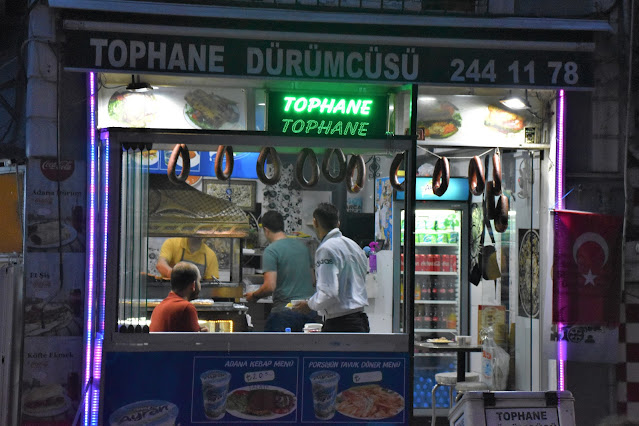THE SIMIT, SO MUCH MORE THAN A TURKISH BAGEL
Over the
years, the New York-style bagel has come to dominate breakfast buffets and
brunch tables, but it is far from the only style of bagel out there.
If you
look back at the history of the bagel, you'll find many ancient bagels that
served as predecessors to the modern bagel. One of the oldest bagels, dating
back to the Ottoman Empire, is the Turkish bagel, called a simit. But what
is a Turkish bagel?
"The simit is a traditional Turkish street food and
breakfast item that originates in Turkey but is popular throughout the Middle
East and Mediterranean," explains Zulfikar Bekar, president of Simit +
Smith, a Turkish bakery and cafe that's based in New York City. "Many
people grab simits during the morning rush hour on their way to work as it is
simple, affordable, flavorful, and nutritious."
So far, so
bagel. But the form factor might be where the similarities between the New
York-style and Turkish bagels end, because there are some pretty significant
differences between a New York and Turkish bagel when it comes to taste
and texture.
The simit, for example, is sweeter than a classic New York-style
bagel, and the texture couldn't be more opposite. While a New York-style bagel
is known for its thick crust and dense, chewy interior, a simit is lighter and
less doughy, though still crisp on the outside.
There's also
a signature sweetness to a simit, which comes from the addition of pekmez,
which Bekar describes as "a molasses-like syrup." It's made from
the boiled down juices of fruits, most commonly grapes but sometimes
mulberries, apples, plums, and pears, and it's a standard Turkish breakfast
ingredient. The dough, once rolled out into rings, is dipped into the
pekmez, which gives the pastry its signature crispiness once baked.
After the
excess molasses drips off the bagel, the whole thing is rolled in sesame seeds
and baked in the oven for 30 minutes. There's no boiling, as with either New
York- or Montreal-style bagels, which makes the whole process a little simpler.
Even though
it's a little bit different from the New York-style bagel you know and love,
the simit is still a perfect choice for breakfast, either savory or sweet.
"It is often consumed with tea or coffee and with a spread like feta,
cream cheese, or jam," says Bekar. Simit + Smith even makes so-called
Simitwiches, or sandwiches on simits, so don't be scared to try a bacon, egg,
and cheese on it, either.
Because even though these simits have been served for
breakfast for centuries, and are very different from their North American
predecessors, there's no reason Turkish bagels can't get the New York
treatment, too.
--Courtesy of ExtraCrispy.com




















